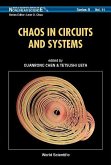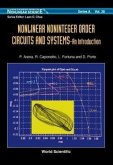The basic procedures for designing and analysing electronic systems are based largely on the assumptions of linear behavior of the system. Nonlinearities inherent in all real applications very often cause unexpected and even strange behavior. This book presents an electronic engineer's perspective on chaos and complex behavior. It starts from basic mathematical notions which enable understanding of the observed phenomena, and guides the reader through the methodology and tools used in the laboratory and numerical experiments to interpretation and explanation of basic mechanisms. On typical circuit examples, it shows how the theoretical and empirical developments can be used in practice. Attention is drawn to applications of chaotic circuits as noise generators and the possible use of synchronized chaotic systems in information transmission and encryption. Chaos control is considered as a new, emerging area where electronic equipment and chaos theory could turn vital in biomedical and engineering issues.








